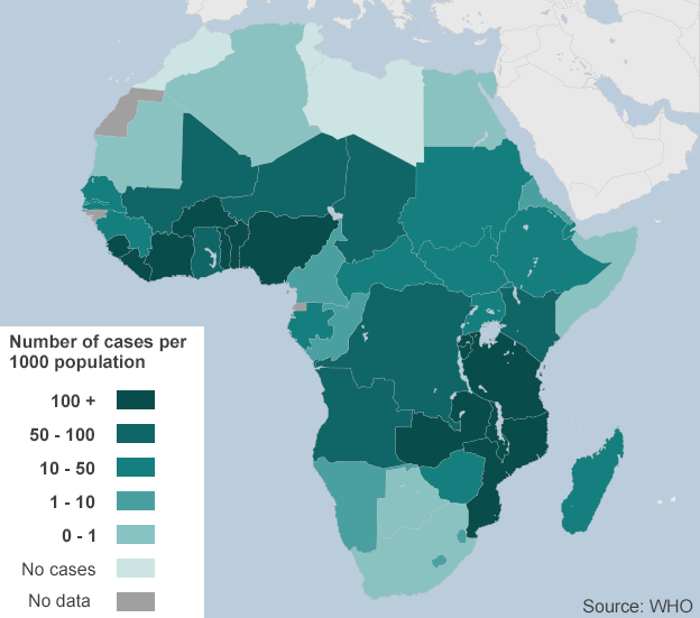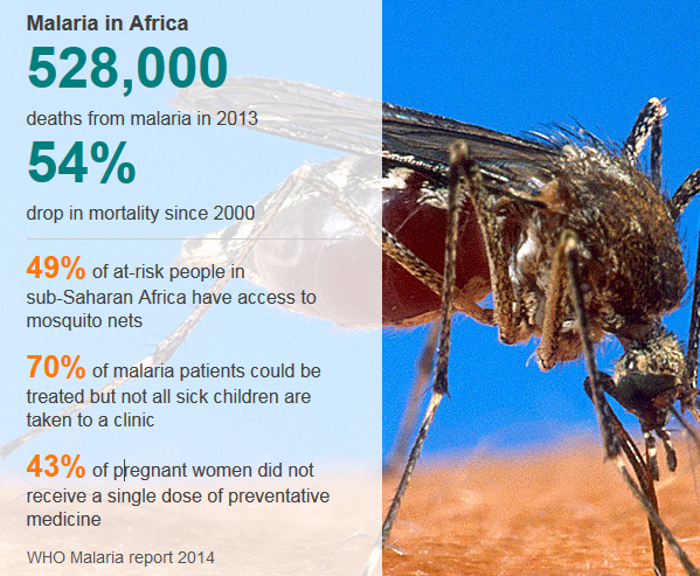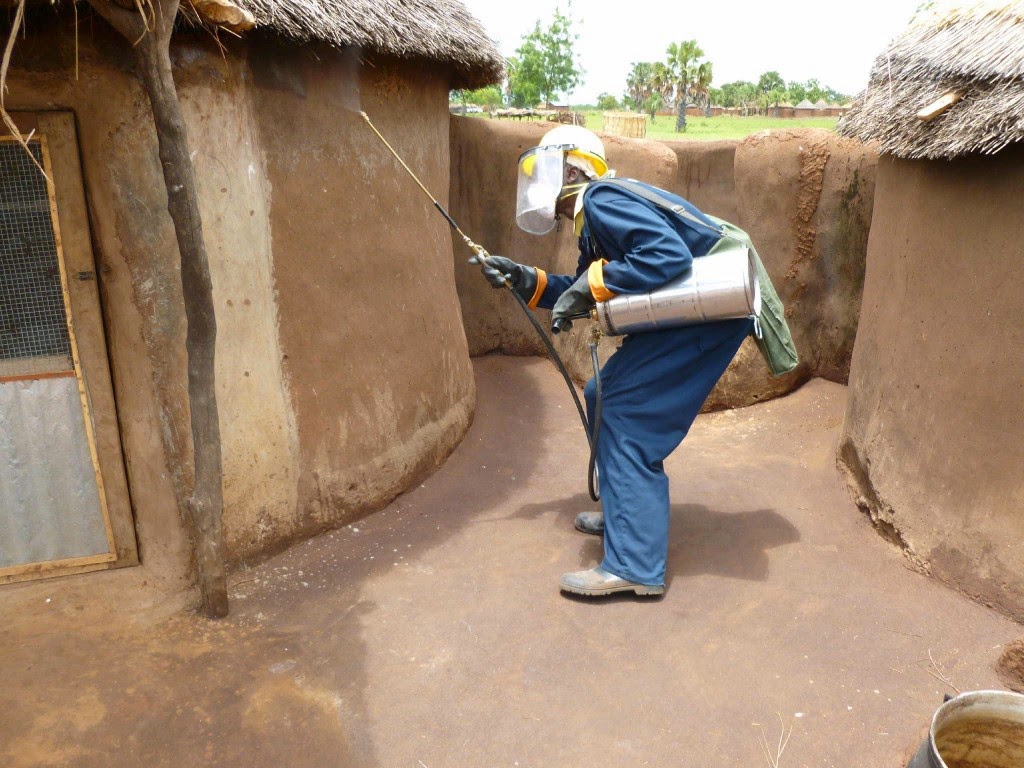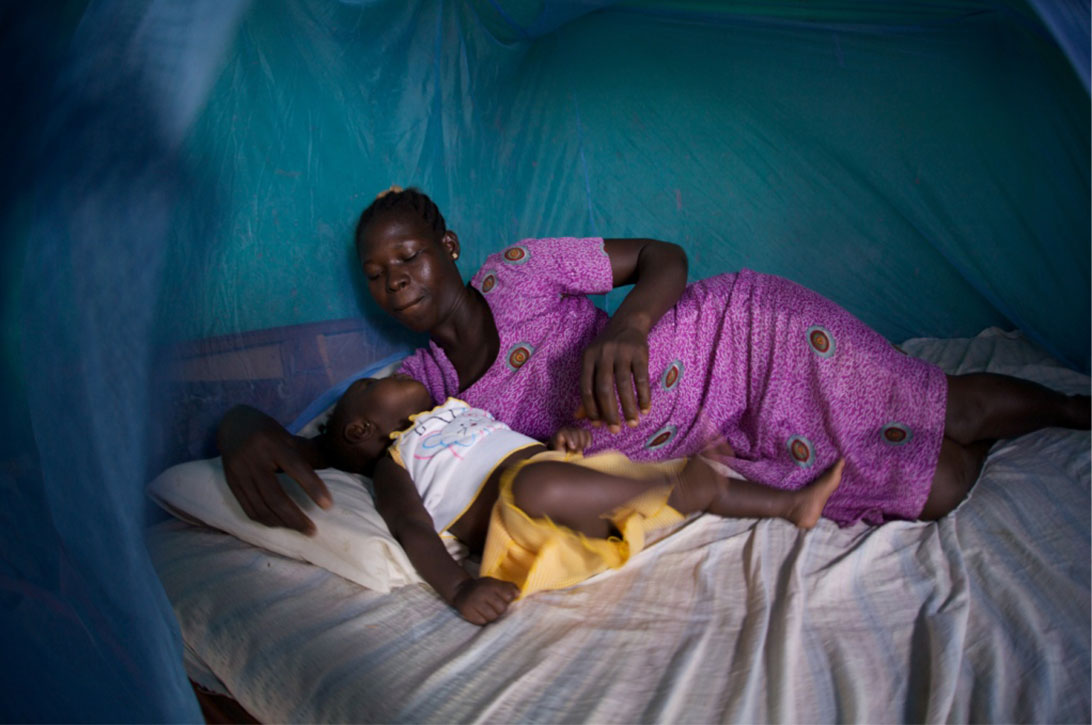The World Health Organization says it is confident that deaths from malaria could be stopped entirely.
Spread by the bites of infected mosquitoes, the illness is both preventable and treatable.
Global efforts over the last decade have already halved the number of people dying from malaria – a “tremendous achievement”, says WHO’s director general Dr Margaret Chan.
So, what are we doing right and what more needs to be done?
Malaria In Africa

Scale of The Problem
In 2014, 97 countries and territories have malaria transmission, and an estimated 3.3 billion people are at risk of being infected.
The disease burden is highest in Africa – 90% of all malaria deaths occur here.
But there is reason for hope.
Malaria mortality rates have dropped by 54% in the WHO Africa Region. And the number of people infected has fallen by a quarter – from 173 million in 2000 to 128 million in 2013. This is despite a 43% increase in the African population living in malaria transmission areas.
Two new countries – Azerbaijan and Sri Lanka – reported zero indigenous cases for the first time in 2013.
Eleven others – Argentina, Armenia, Egypt, Georgia, Iraq, Kyrgyzstan, Morocco, Oman, Paraguay, Turkmenistan and Uzbekistan – succeeded in maintaining zero cases.
Who is at risk?

While malaria is indiscriminate, the heaviest toll is on the poorest and most vulnerable communities.
Children aged five and under and who live in Africa account for 78% of all malaria deaths.
Young children, pregnant women and individuals with a weakened immune system, are at particular risk of developing serious illness if they become infected with malaria.
An estimated 278 million people in Africa still live in households without a single insecticide-treated bed net, and about 15 million pregnant women remain without access to preventive treatment for malaria.
Bed nets
Avoiding mosquito bites between dusk and dawn is the first line of defence against malaria.
Bed nets have been shown to cut the incidence of malaria cases by half.
Access to insecticide-treated bed nets has increased substantially. In 2013, almost half of all people at risk of malaria in sub-Saharan Africa had access to an insecticide-treated net, compared to 3% in 2004.
Another 214 million bed nets are scheduled for delivery to endemic countries in Africa by year-end, but this still may not be enough.
Insecticide spray

In 2013, 123 million people around the world were protected from malaria by coating houses in insecticide spray to kill any visiting mosquitoes.
In Africa, 55 million people, or 7% of the population at risk, lived in households that were regularly sprayed.
But indoor residual spraying has decreased in recent years, and insecticide resistance has been reported in 49 countries around the world.
Targeted treatment
Pregnant women living in malarious areas should be offered antimalarial medicine as routine, even if they do not have any signs of infection.
This is because malaria can have devastating consequences for the mother and child.
The proportion of women receiving this treatment has been increasing over time, but the levels remain below target.
Overall, 57% of pregnant women in 37 countries received at least one dose of antimalarial medicine in 2013.
But fewer than a fifth of pregnant women received the three or more doses recommended by WHO, (based on findings from nine countries).
Progress in adopting and rolling out preventive therapies for children has been even slower.
As of 2013, only six of the 16 countries where WHO recommends preventive therapies for children under five have adopted the treatment as national policy.
Drugs and diagnosis

Even though access to rapid diagnostic testing and drug treatment have been strengthened, millions of people continue to lack access to these crucial interventions.
In 2013, 62% of patients with suspected malaria in public health facilities in the WHO African Region received a diagnostic test, compared with 40% in 2010.
And public health facilities had enough antimalarial drugs, called ACTs, to treat more than 70% of patients who presented for care.
But only a small proportion of children sick with malaria received ACTs (artemisinin-based combination therapies) – largely because they were not brought forward for treatment, a problem which experts say needs to be urgently addressed.











Hopefully this thing called Malaria will finally be eradicated from this world.
Malaria has killed too many. Time to put an end to this plague of violence. Kudos to all who are feverishly working to keep Malaria away from people.
This is where African states need to spend the tax payers money. Not on a War on Drugs! That is so ignorant.
But then again, who are our leaders? People who attended Ivy League institutions in the USA. They are simply the worst things that ever happened to Africa.
Referring to the Mis-Education of the Negro right? It is sad that we can’t even stop Malaria, a Mosquito.
These people cannot stop the common Anopheles Mosquito, but somehow they have been convinced by the West that they can eradicate drugs and drug trafficking in West Africa. The sheer nonsense is baffling. When don’t you put your mouth where the food is? We need to first save ourselves and our children from the tiny insect. Not drug cartels, of which there is none in West Africa.
I guess this is more a mosquito problem that we have to address. How do we regulate the mosquito population so that it is no longer a threat to Africa people? Let’s start with eradicating standing water. mosquitoes thrive in moist areas. And keep places clean. These are simple tasks that can help deplete the mosquito population. We must take these tasks seriously if we are to end the malaria epidemic in Africa.
It sounds like someone has a bed netting company that they want to spread around the continent. It would be much easier it the problem were solved by finding a way to decrease the mosquitoes like the above poster mentioned. All these people with degrees in science and no solution to what seems like a simple mathematics problem.
Over half a million deaths from malaria is a lot, even in a continent with over 1 billion people. Something must be done to put an end to this disease.
Based on this map, malaria seems to be a problem especially in the coastal lands. Is there anything that can be done on that front?